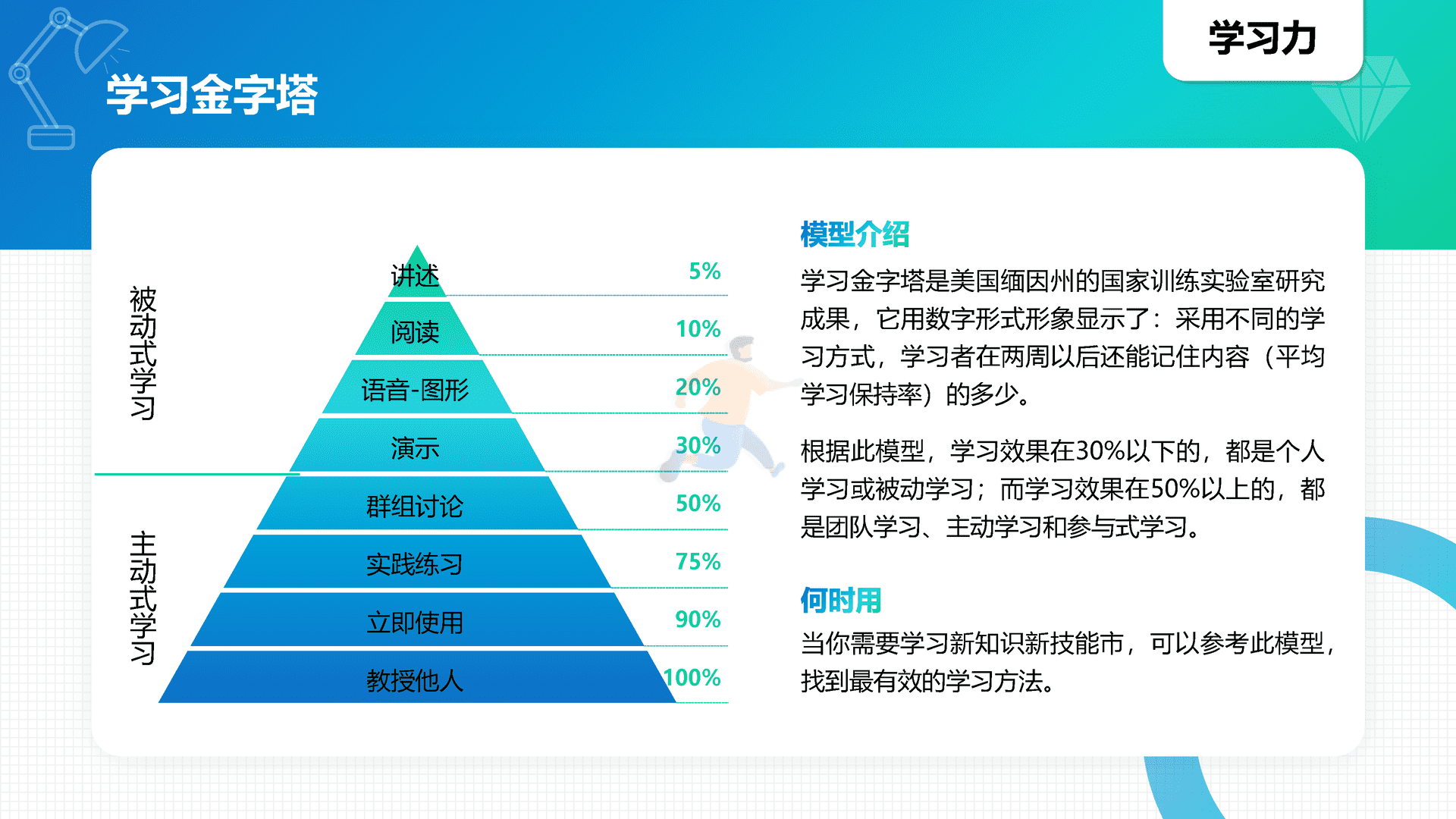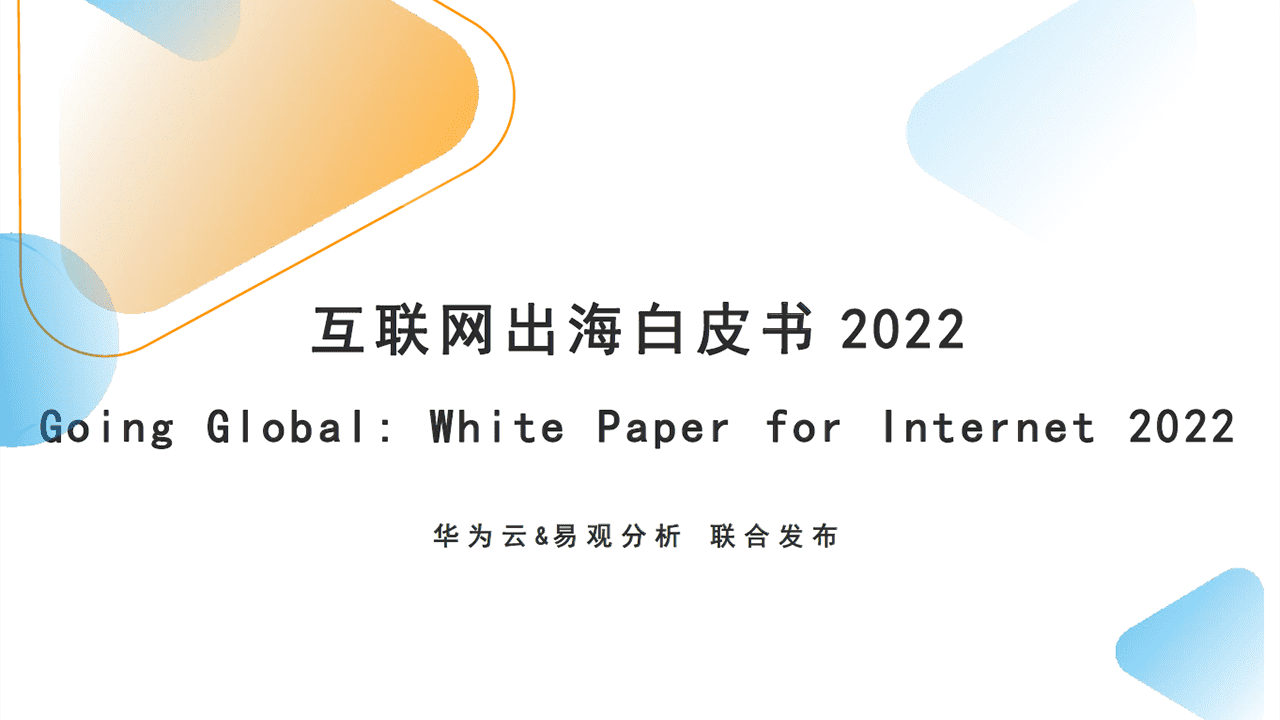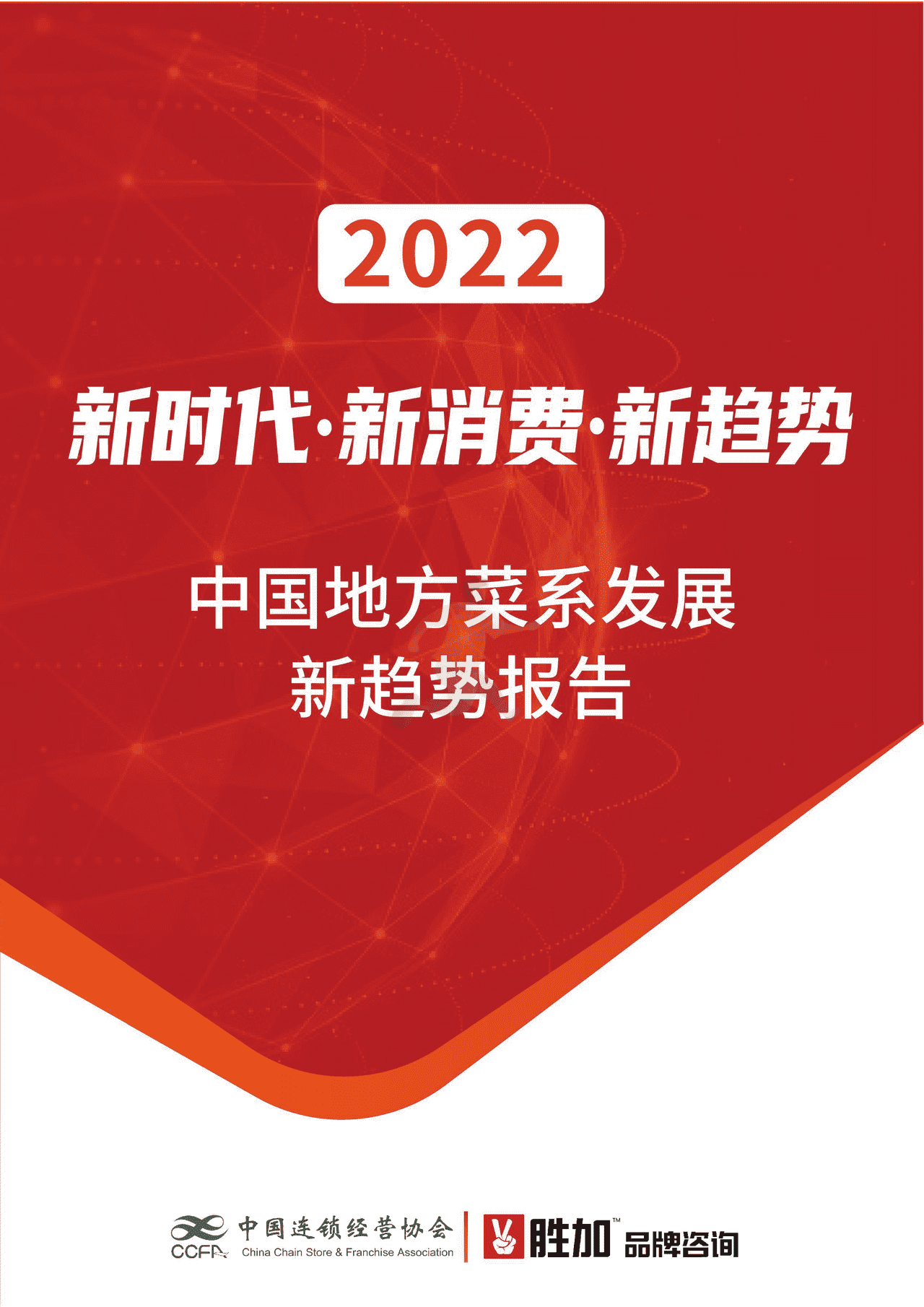As of May 2022, almost half of WHO’s Member States reported that they still lacked essential elements of preparedness for radiation emergencies as part of annual reporting to WHO on the state of core national capacities under the IHR. Essential elements of the public health response to health emergencies include national capability to identify and assess risk, to provide emergency health services and to maintain functional health facilities (e.g., ambulances, hospitals, laboratories, pharmacies), a qualified workforce and sufficient quantities of the necessary medical supplies and devices.
The COVID-19 pandemic and other health emergencies and humanitarian crises have highlighted the need to ensure access to medical supplies and devices for timely, efficient case management (both diagnosis and treatment) of diseases. This can be addressed by establishing national stockpiles of essential medicines and medical devices or through Appropriate alternative arrangements for accessing such supplies through agreements with manufacturers or neighbouring countries.
This document describes protocols and practices for ensuring the essential elements of a national stockpile of medical countermeasures for radiation emergencies, particularly of the pharmaceuticals required to treat radiation injuries. It also addresses governance and management of such stockpiles. It supersedes the 2007 WHO report on development of stockpiles for radiation emergencies. It includes updated information on the pharmaceutical elements of stockpiles and additional information on medicines recently approved for clinical management of radiation injuries in several countries.
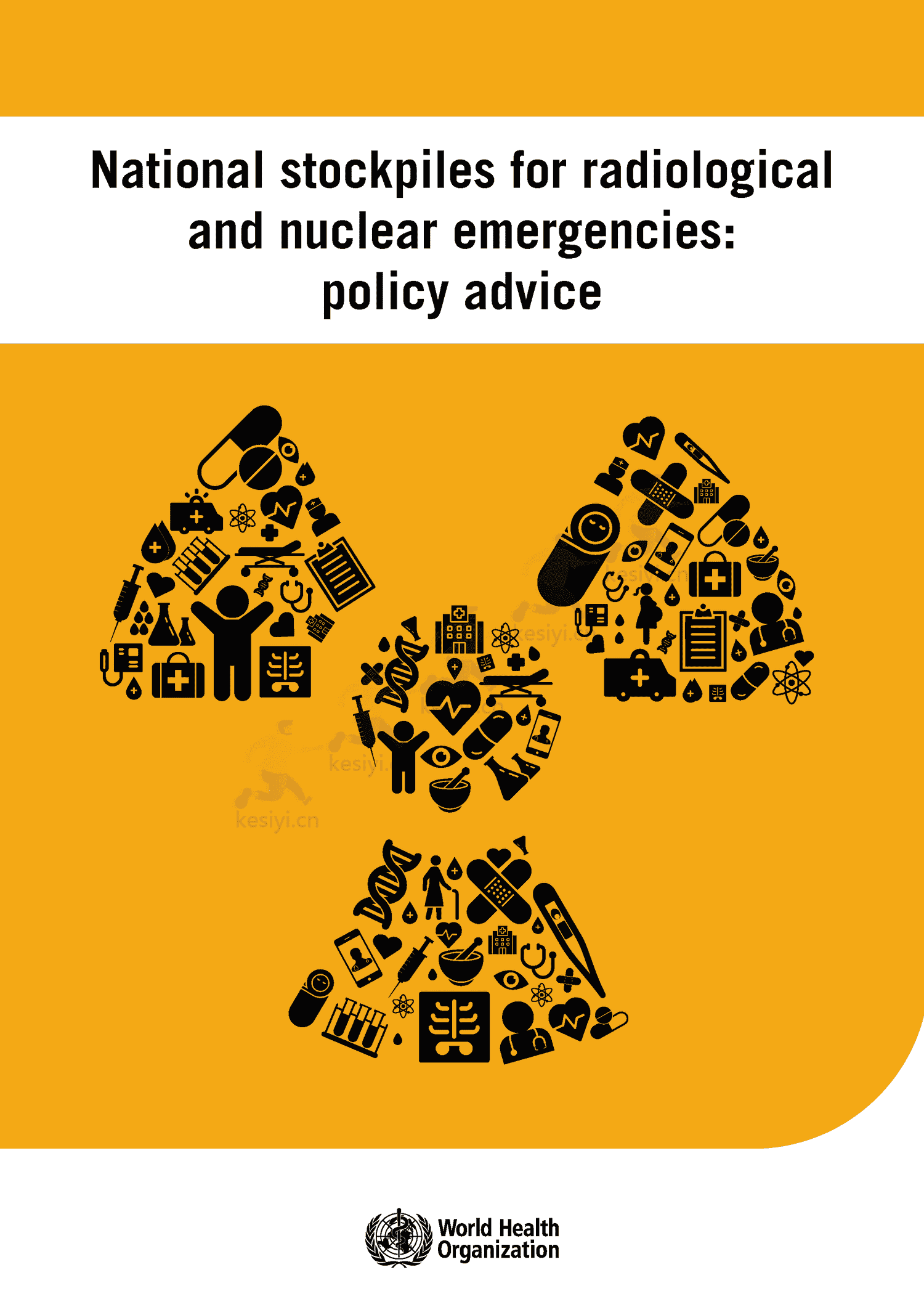 1 / 66
1 / 66
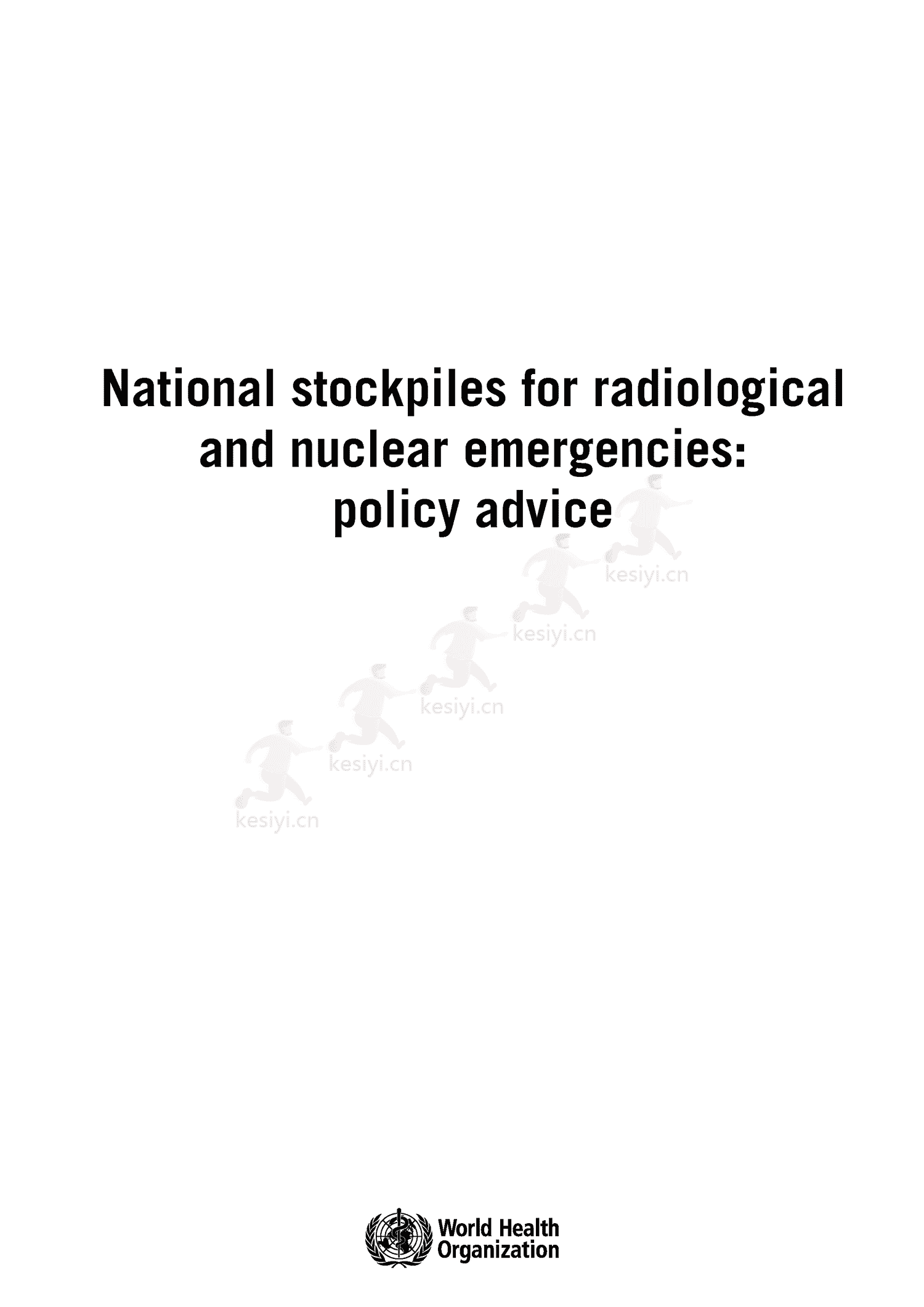 2 / 66
2 / 66
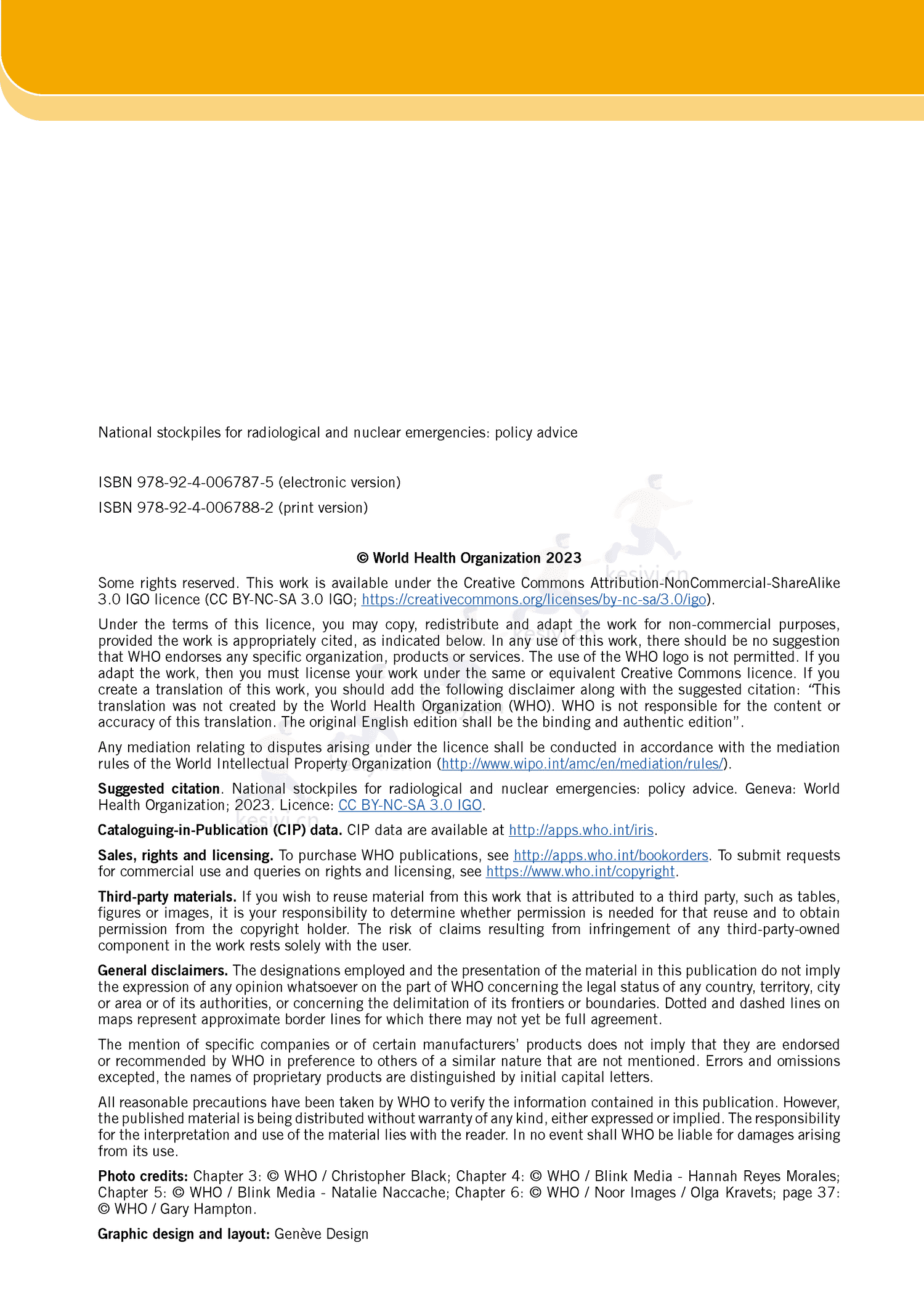 3 / 66
3 / 66
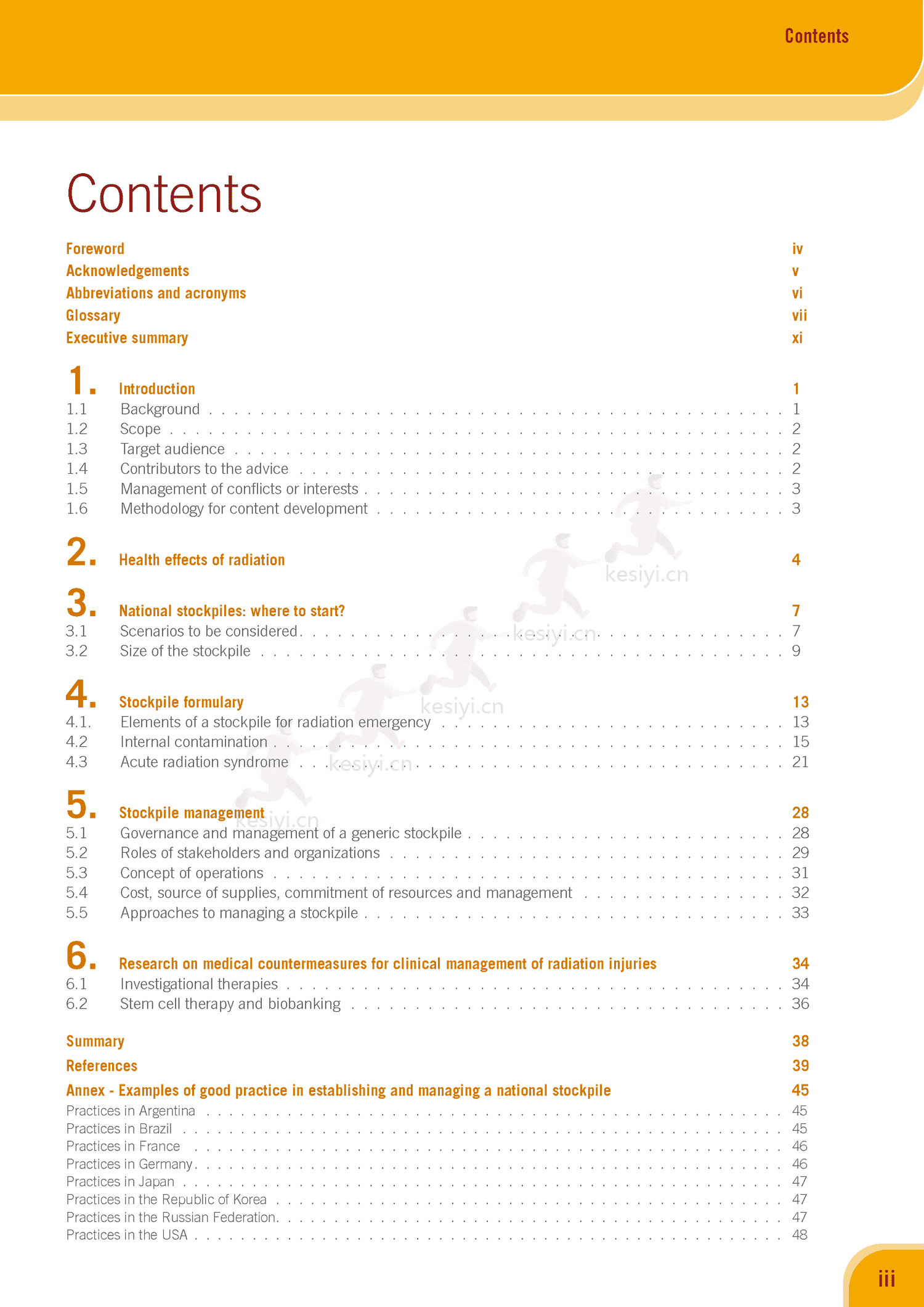 4 / 66
4 / 66
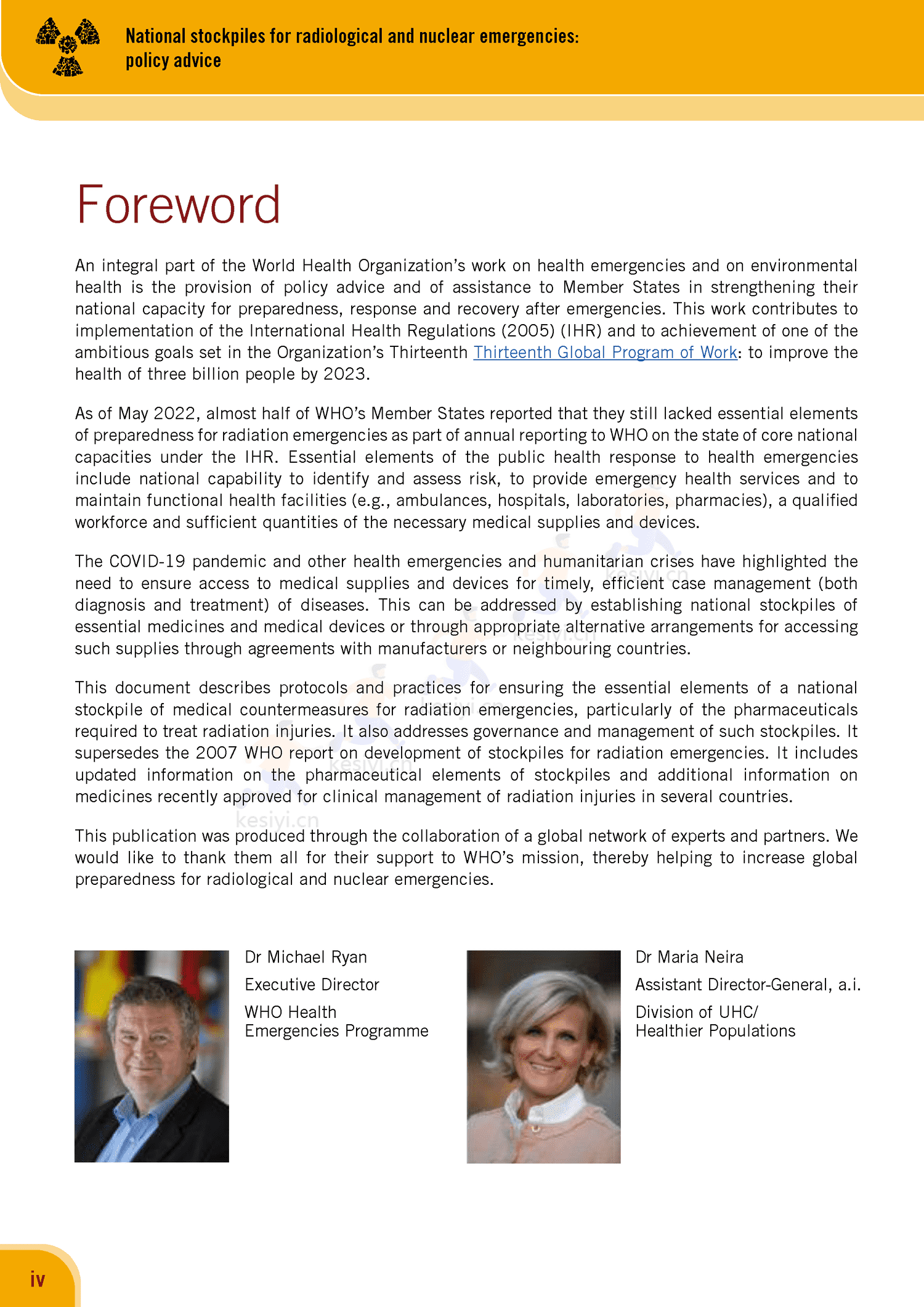 5 / 66
5 / 66
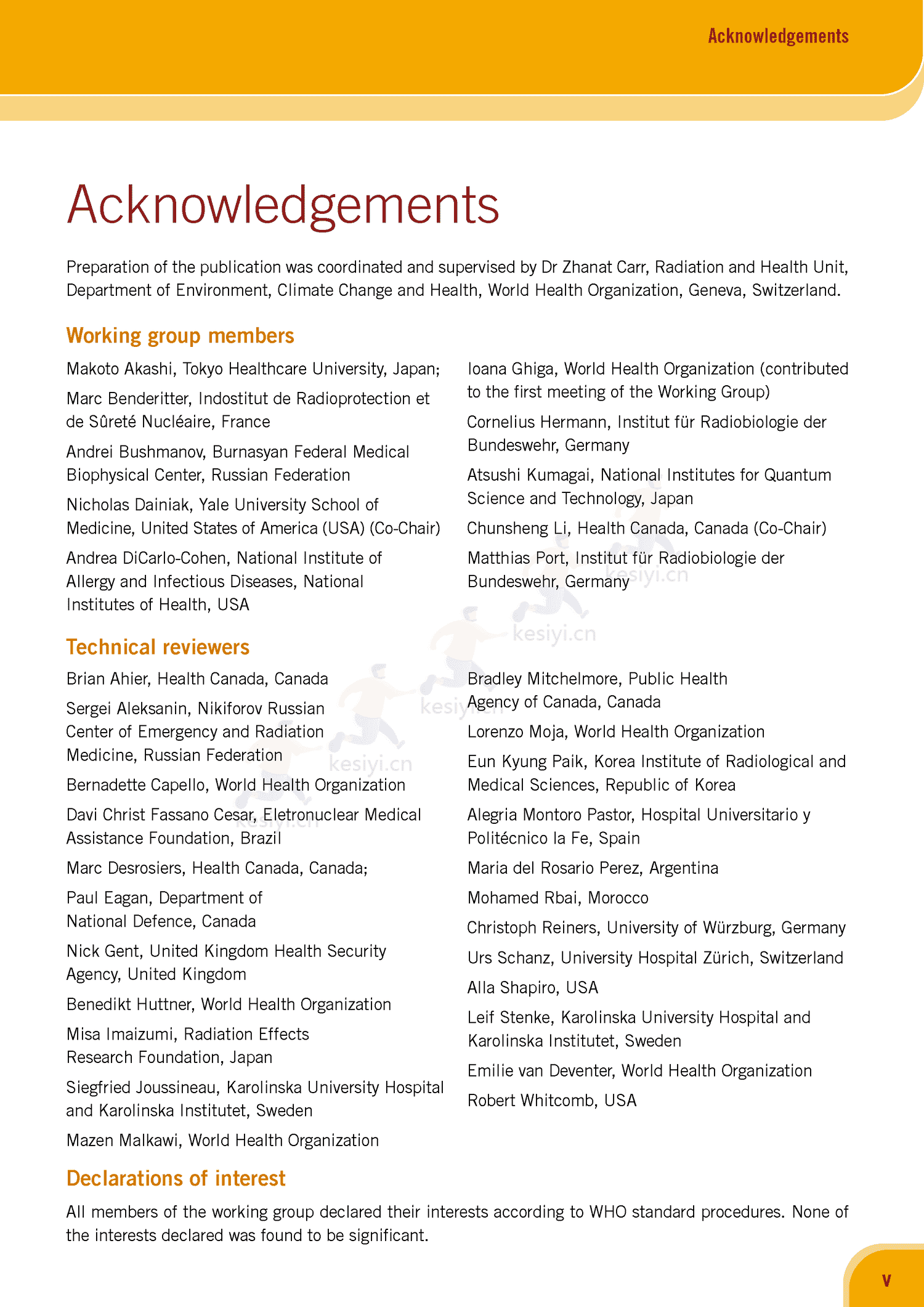 6 / 66
6 / 66
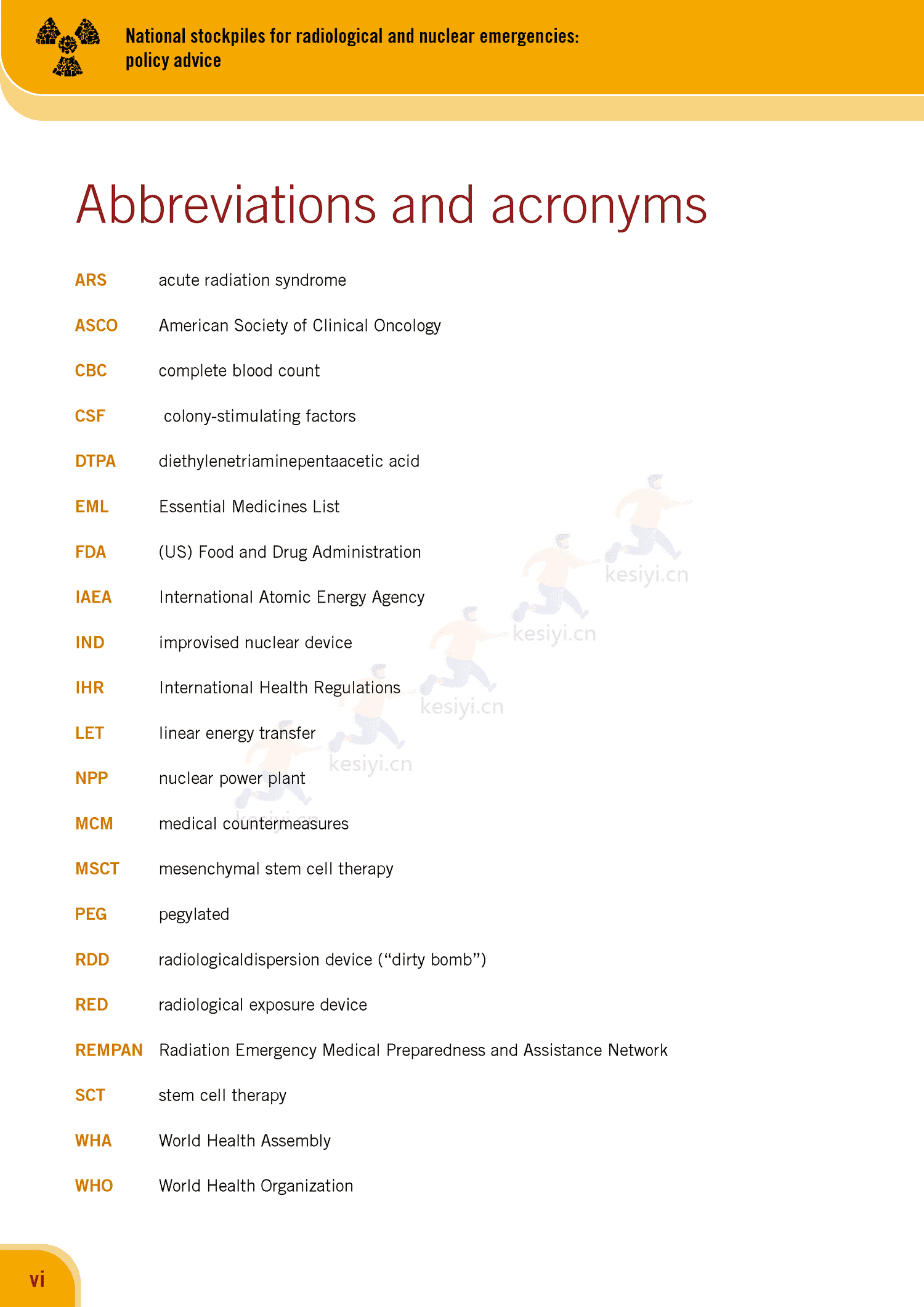 7 / 66
7 / 66
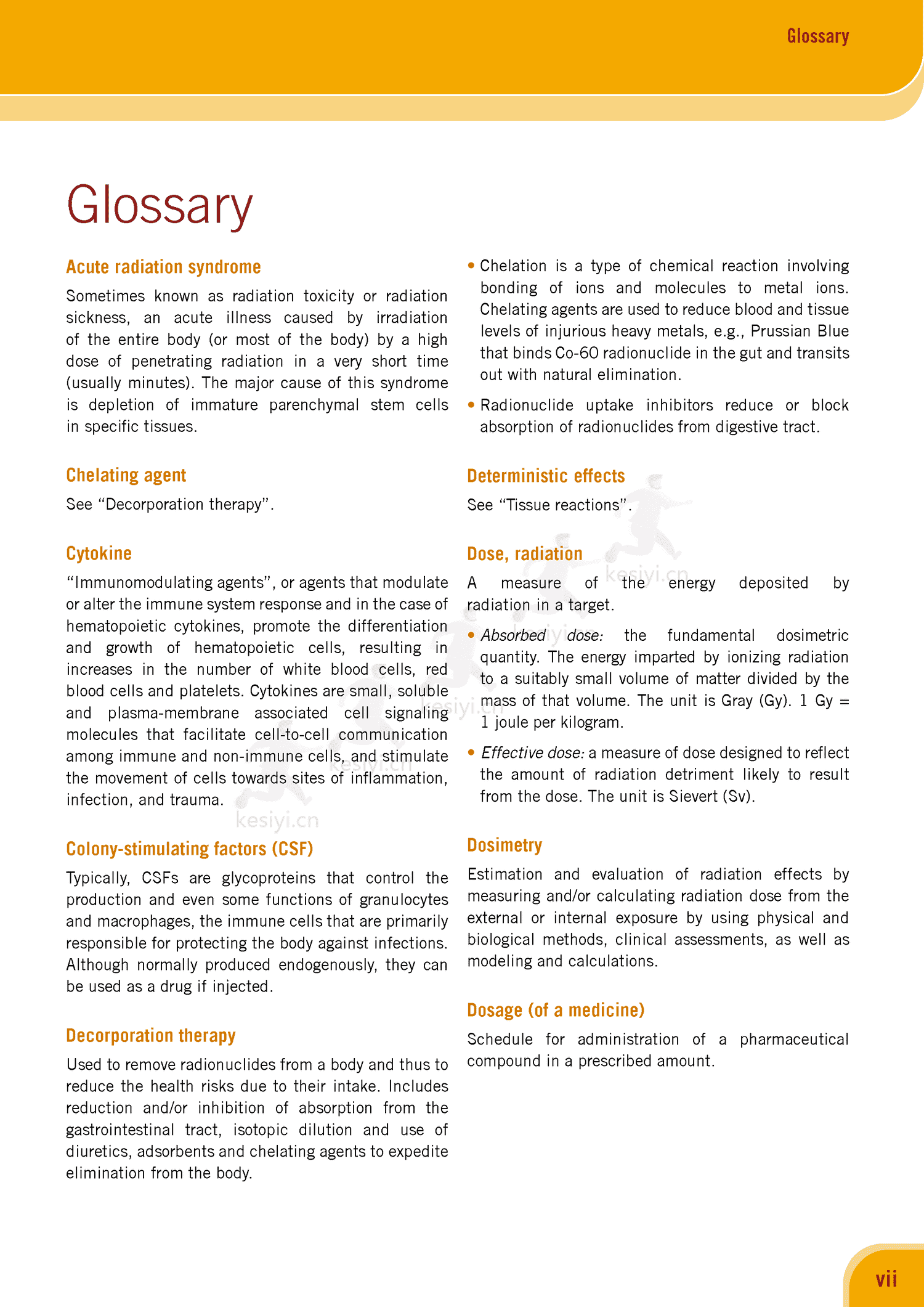 8 / 66
8 / 66
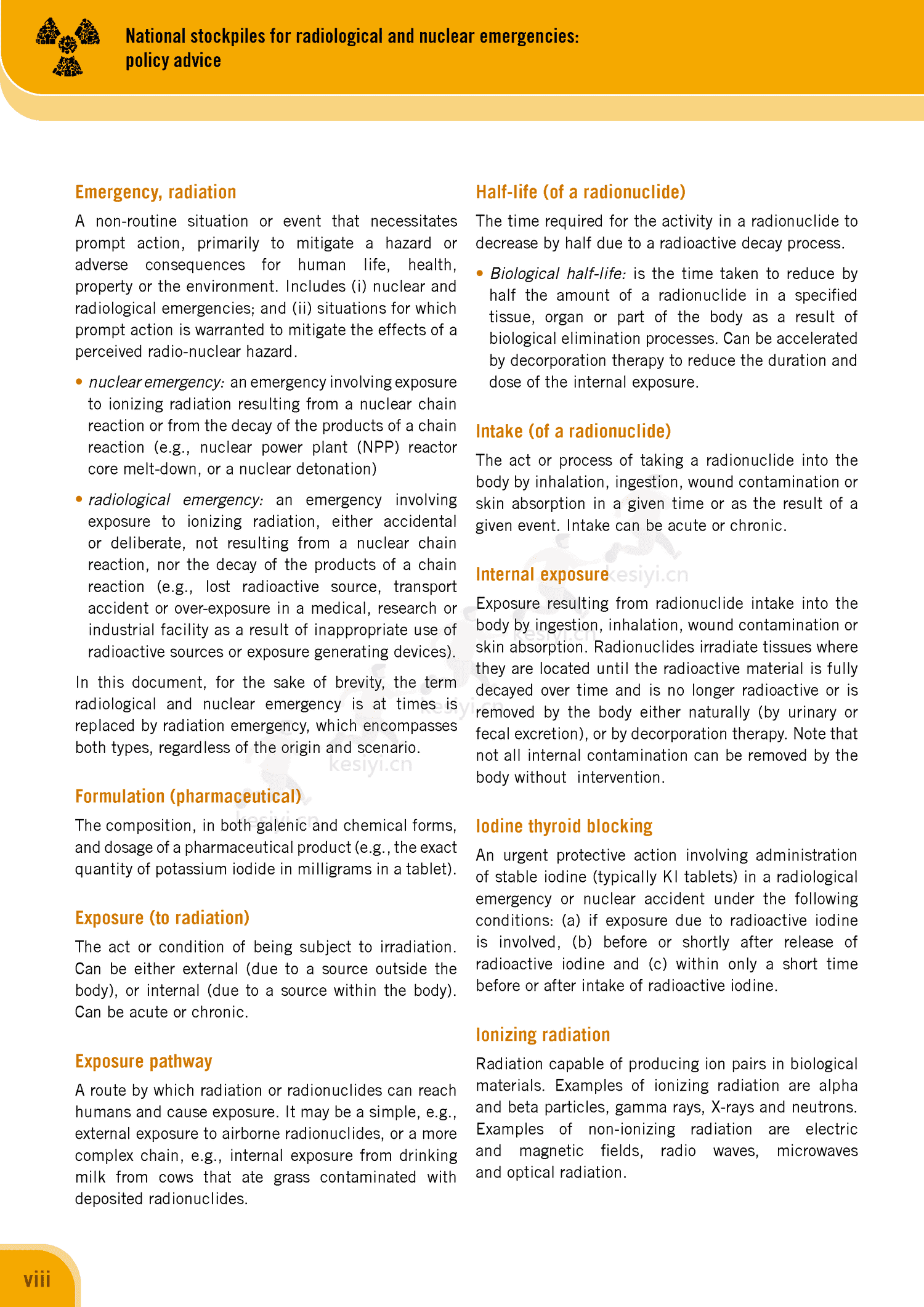 9 / 66
9 / 66
 10 / 66
10 / 66
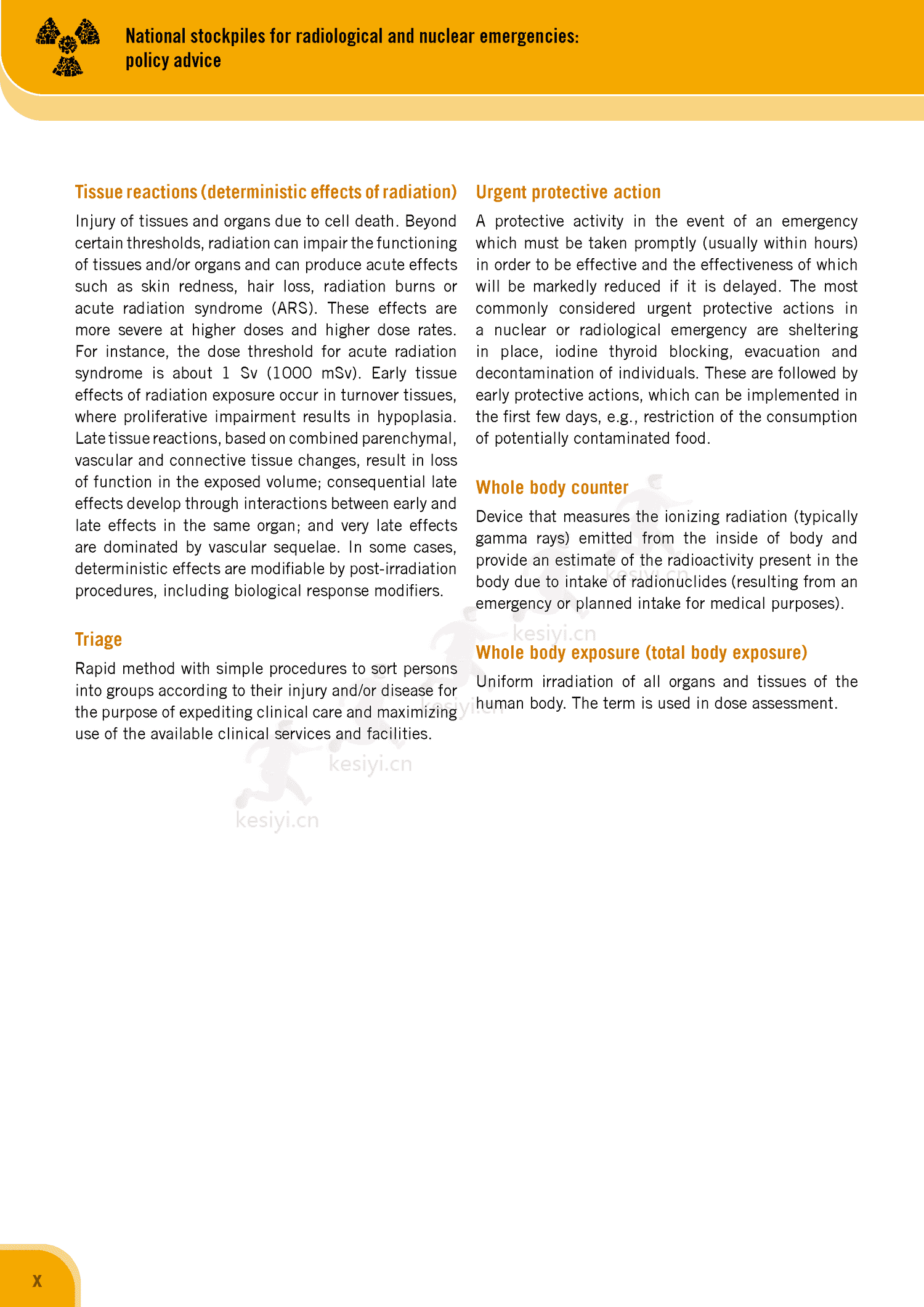 11 / 66
11 / 66
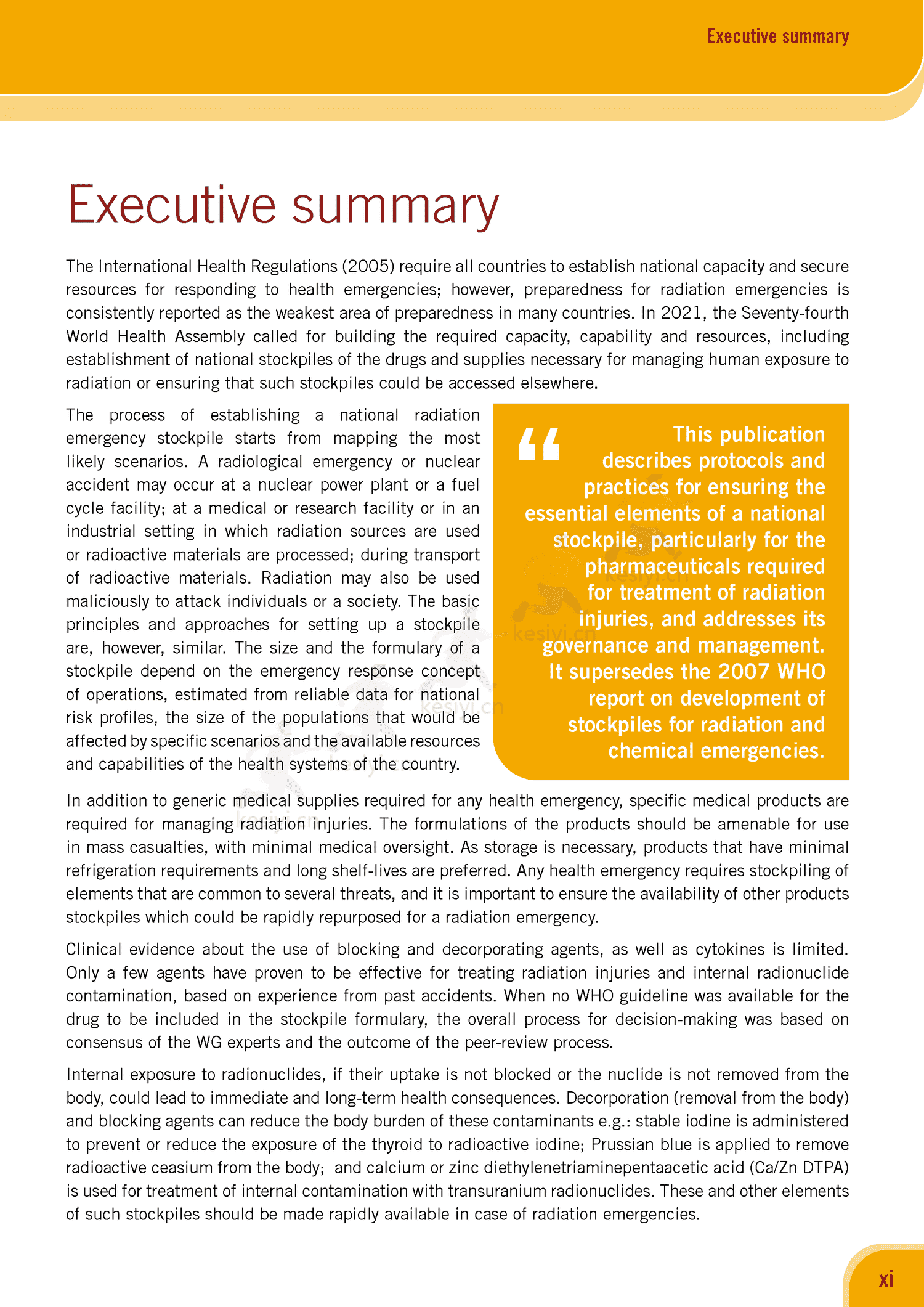 12 / 66
12 / 66
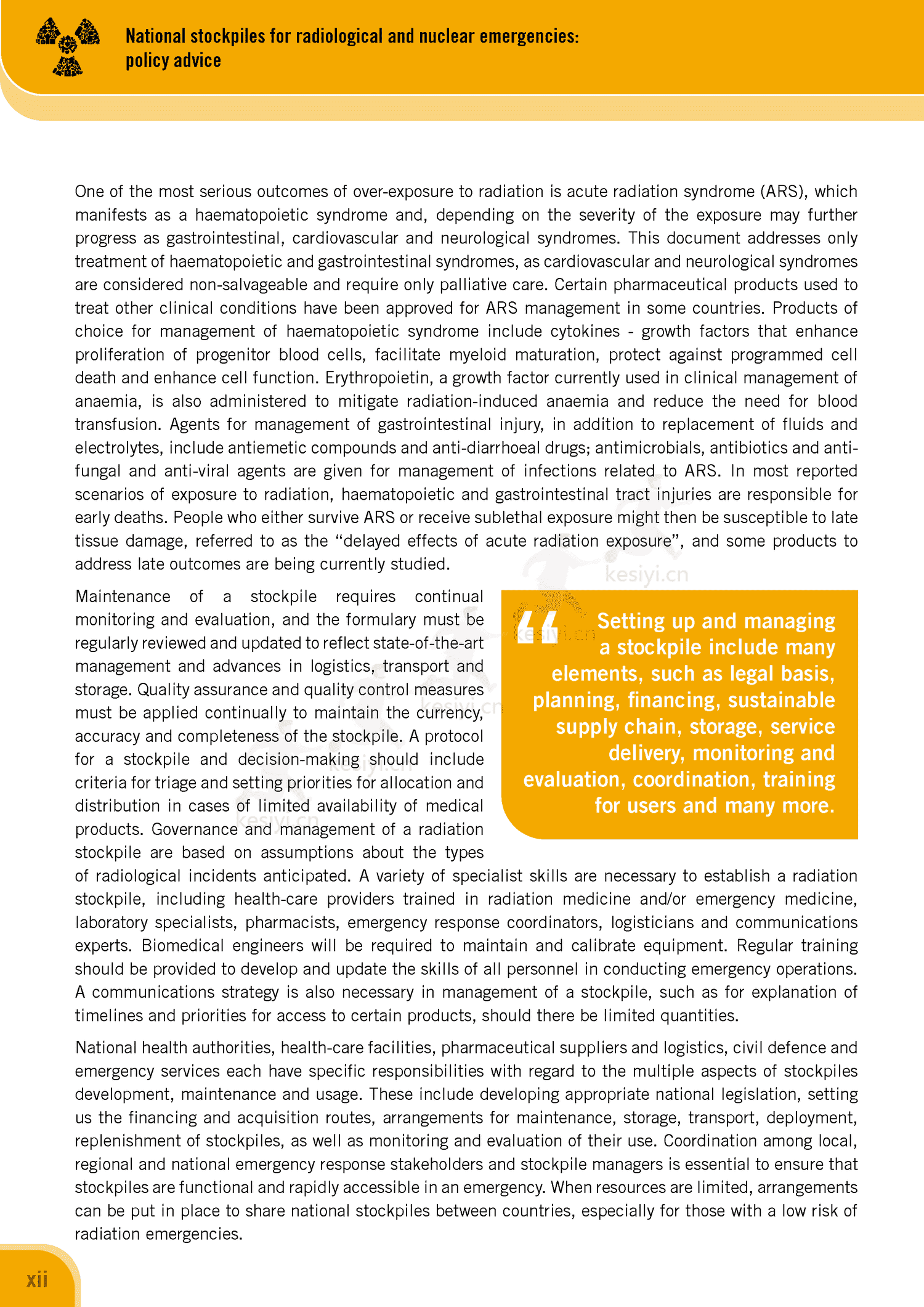 13 / 66
13 / 66
 14 / 66
14 / 66
 15 / 66
15 / 66
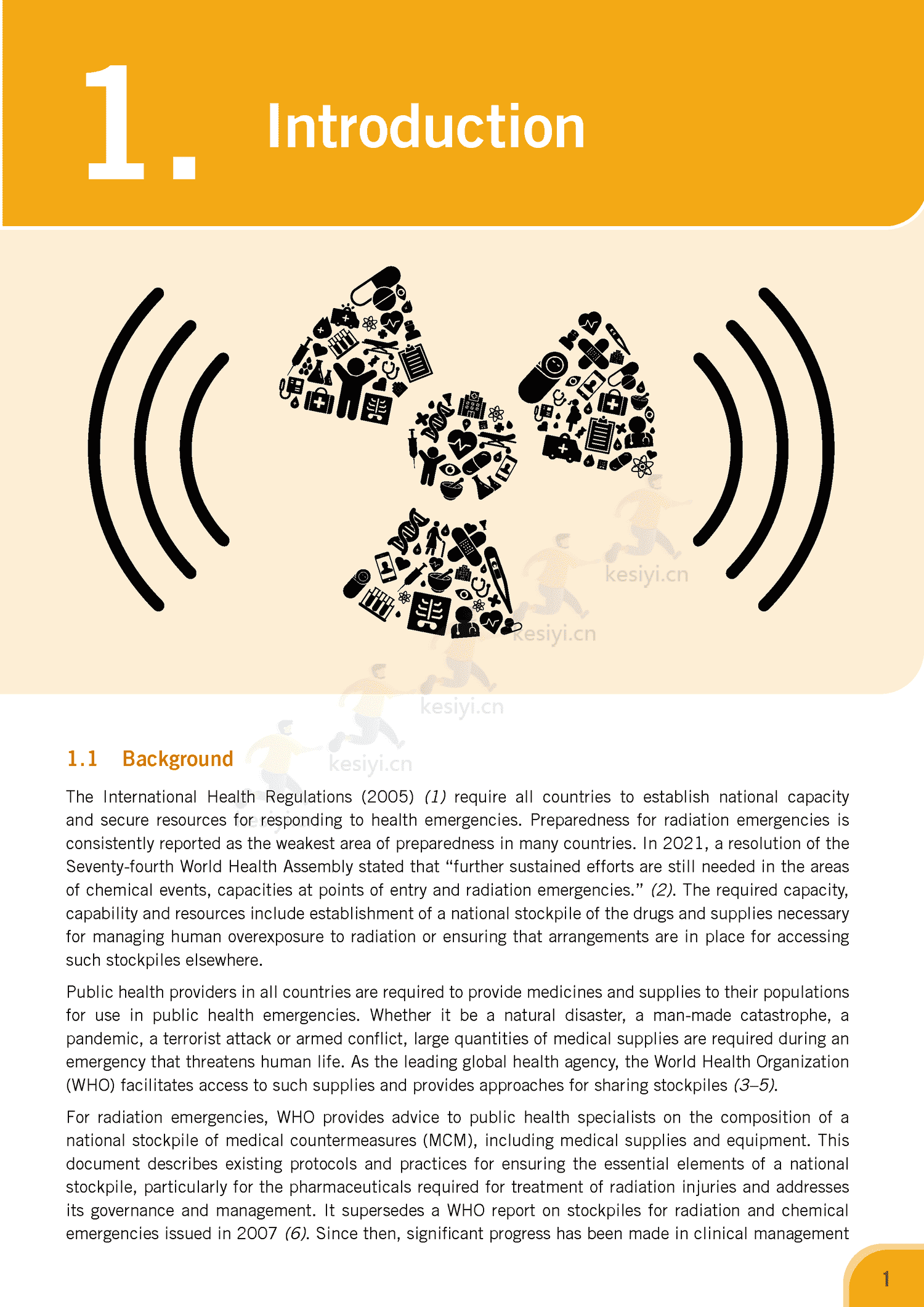 16 / 66
16 / 66
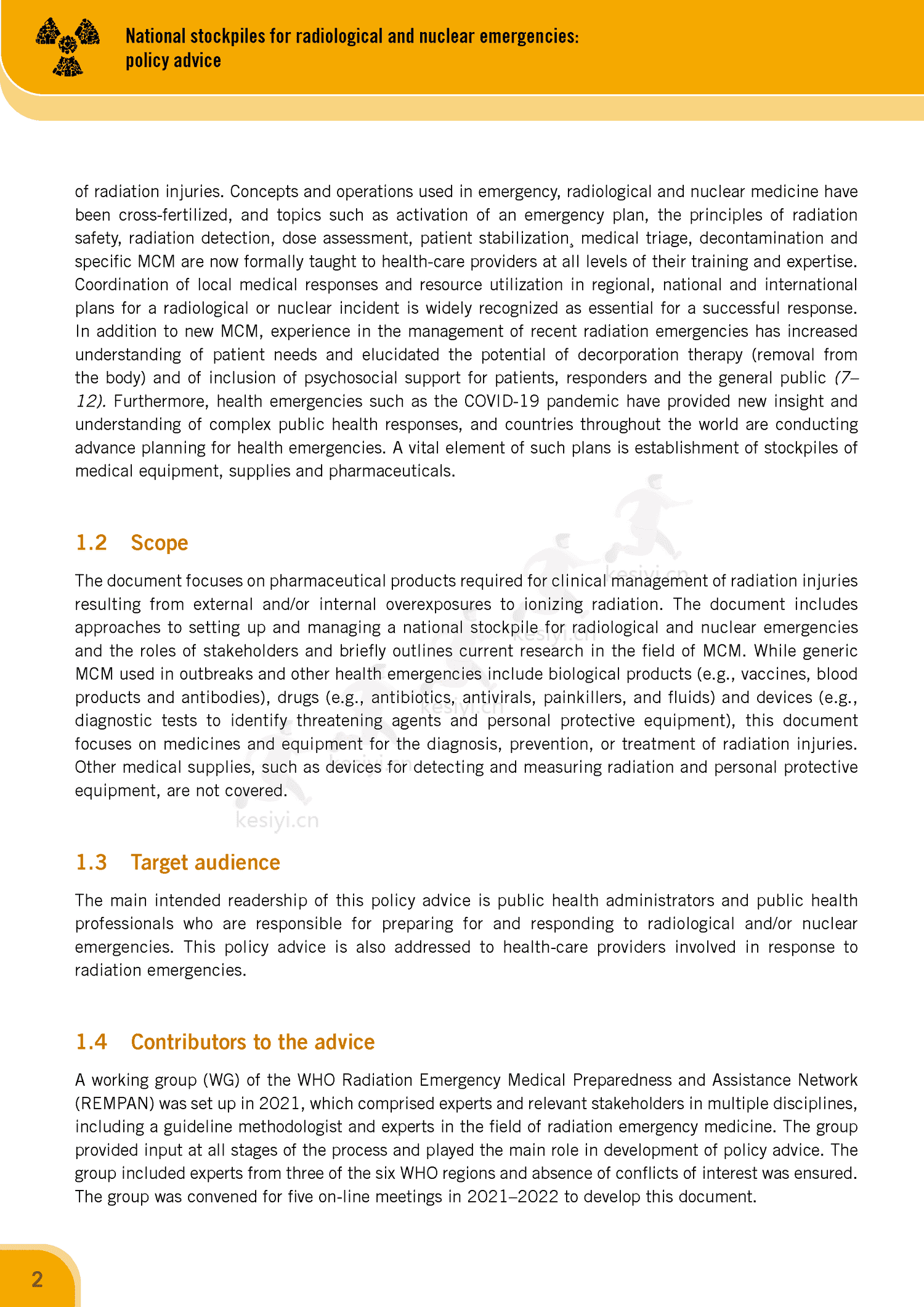 17 / 66
17 / 66
 18 / 66
18 / 66
 19 / 66
19 / 66
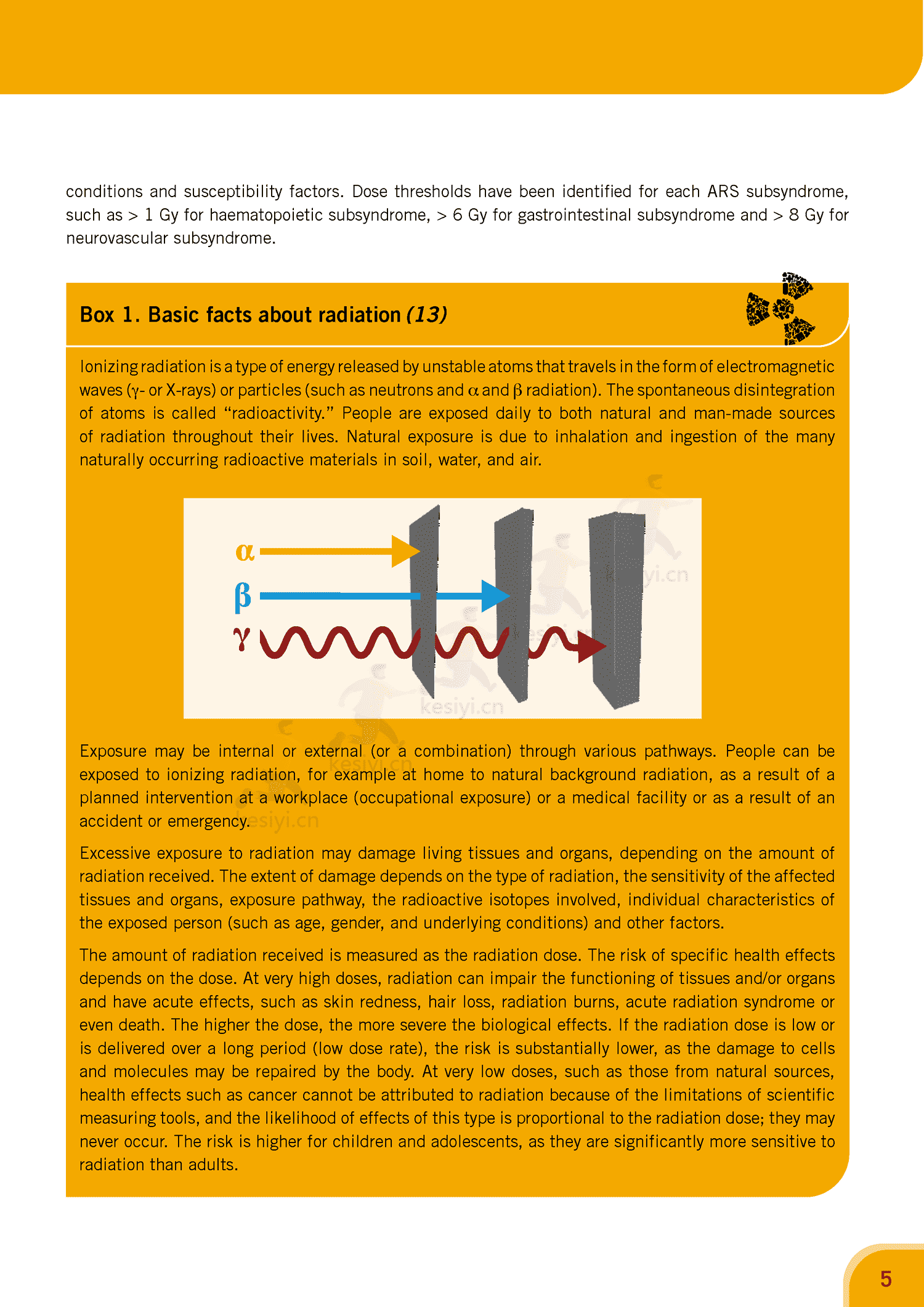 20 / 66
20 / 66
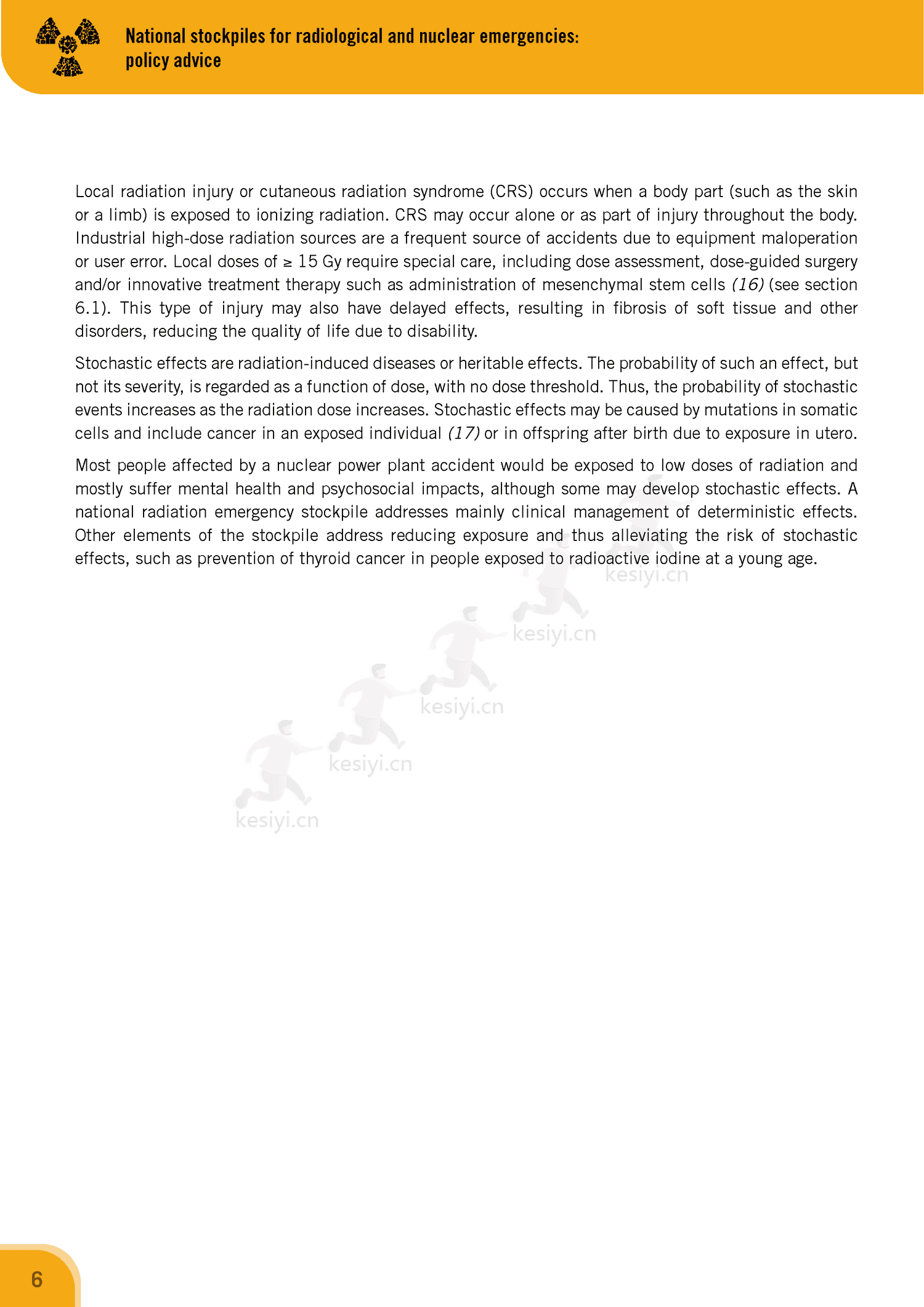 21 / 66
21 / 66
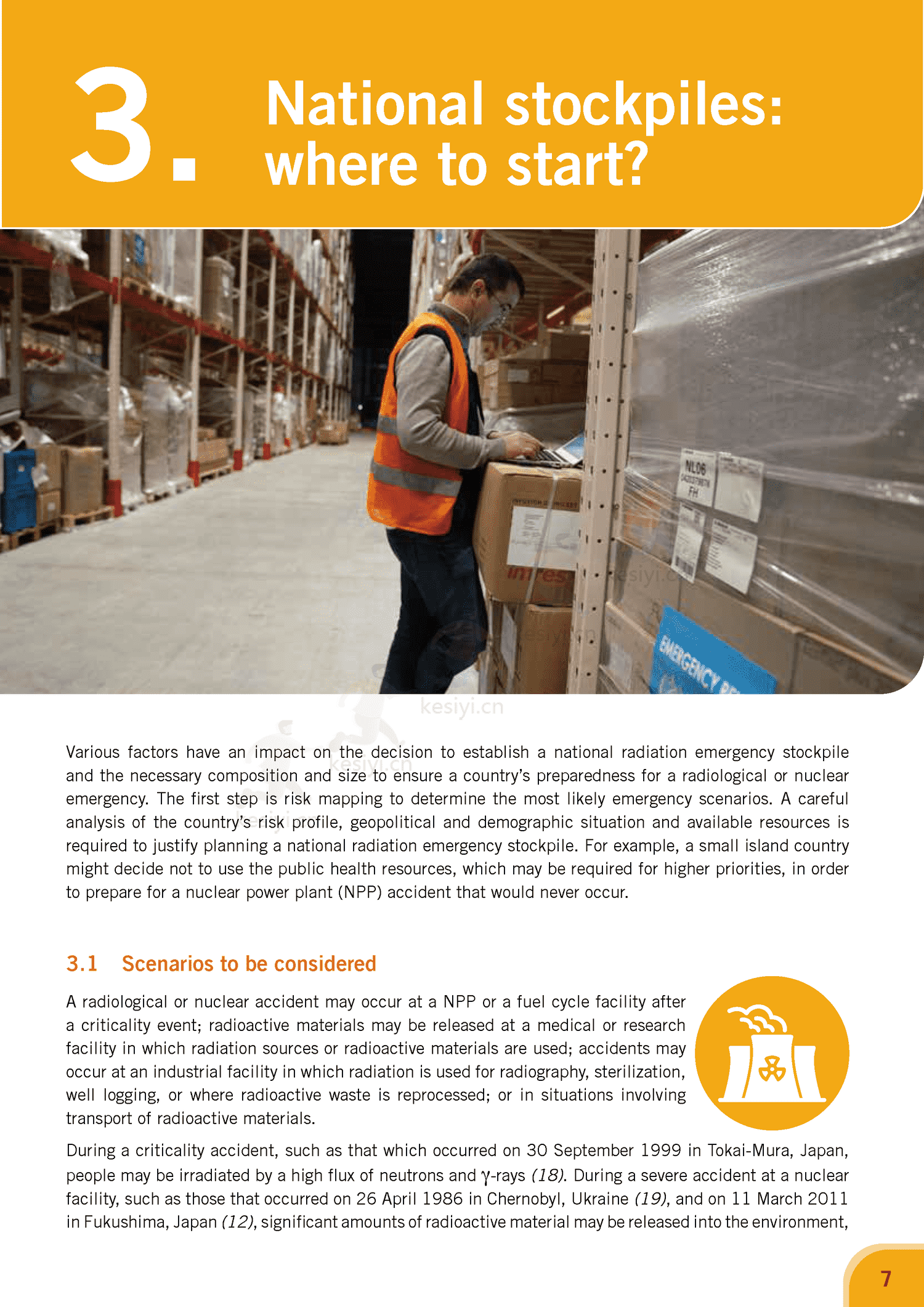 22 / 66
22 / 66
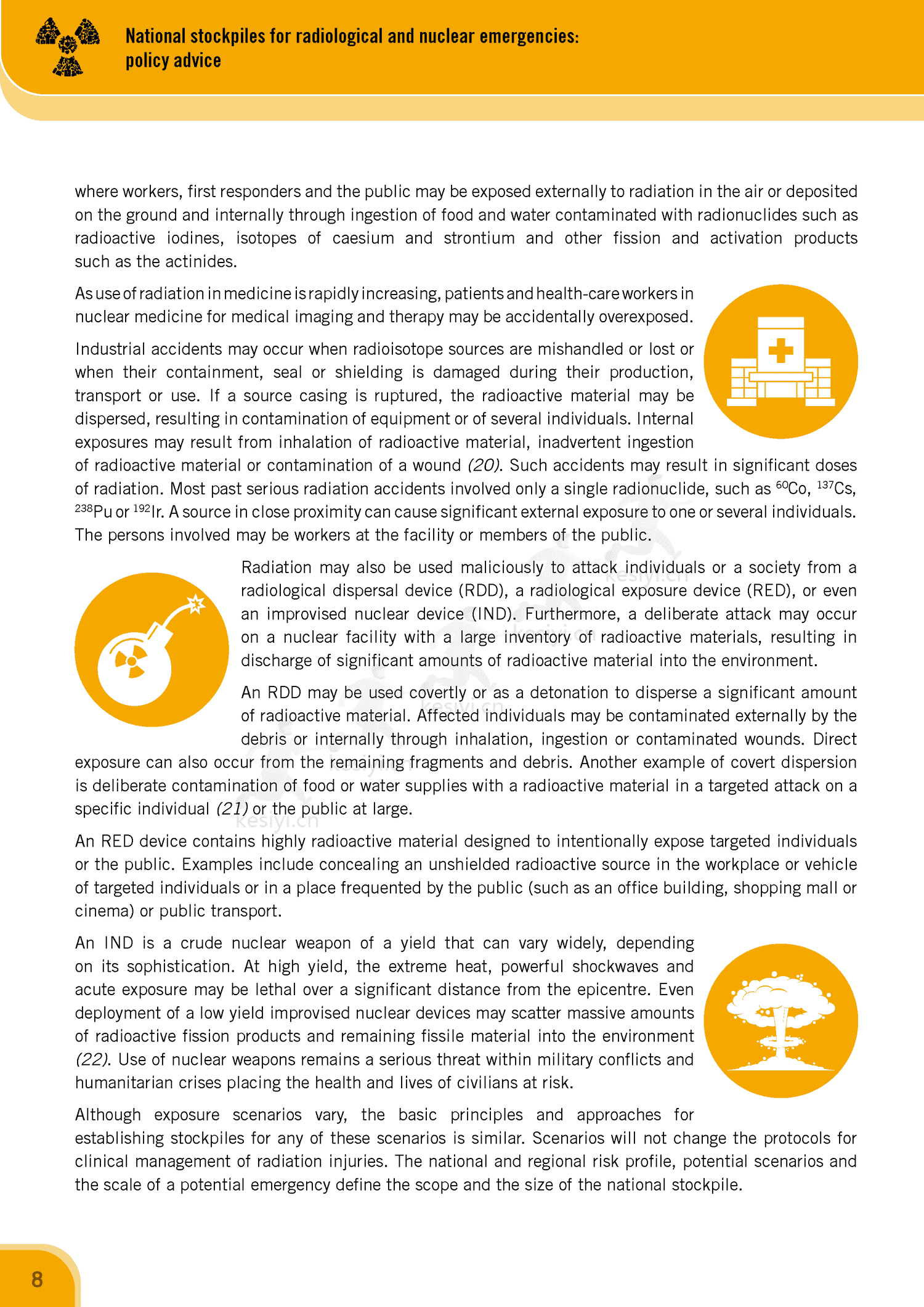 23 / 66
23 / 66
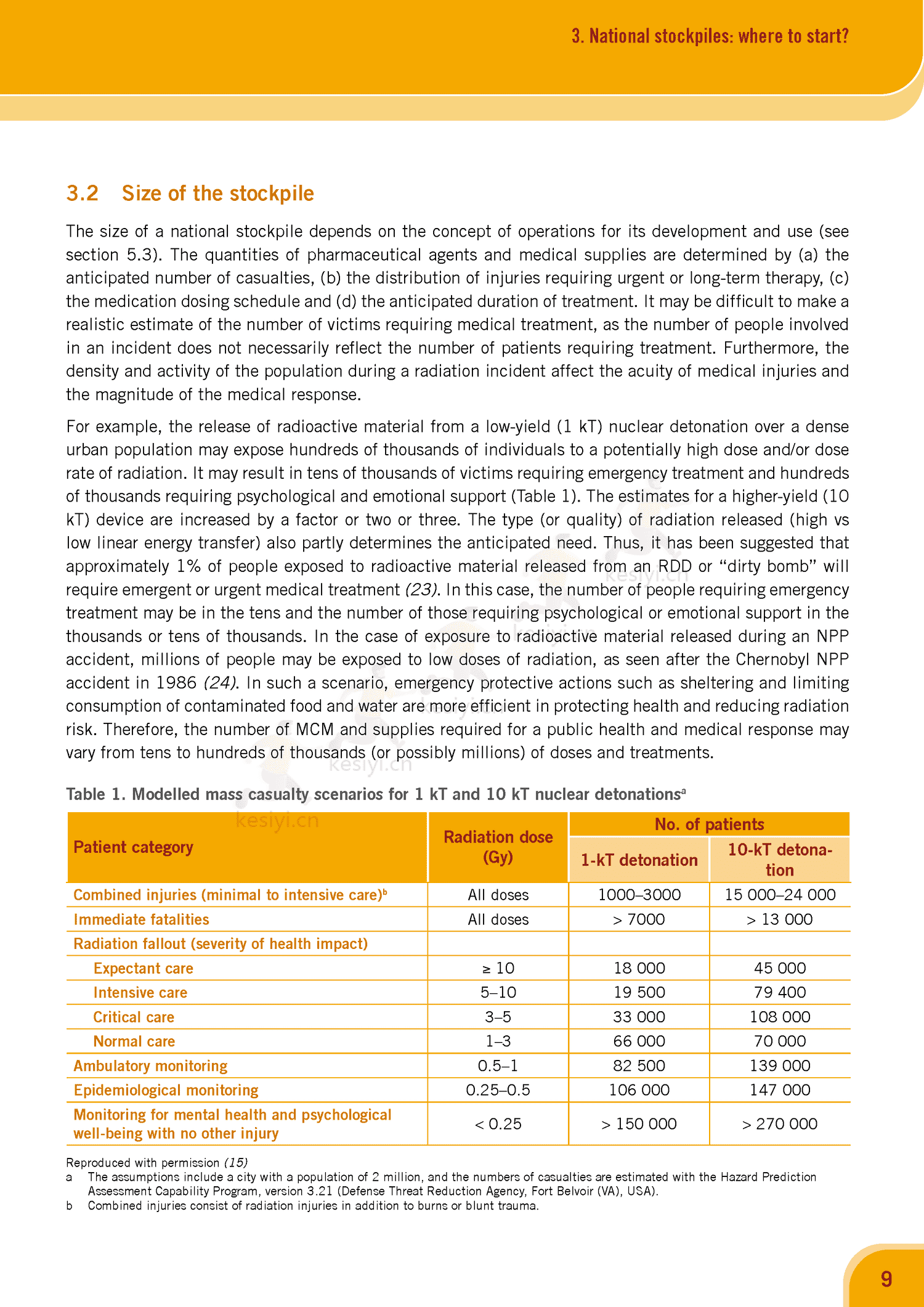 24 / 66
24 / 66
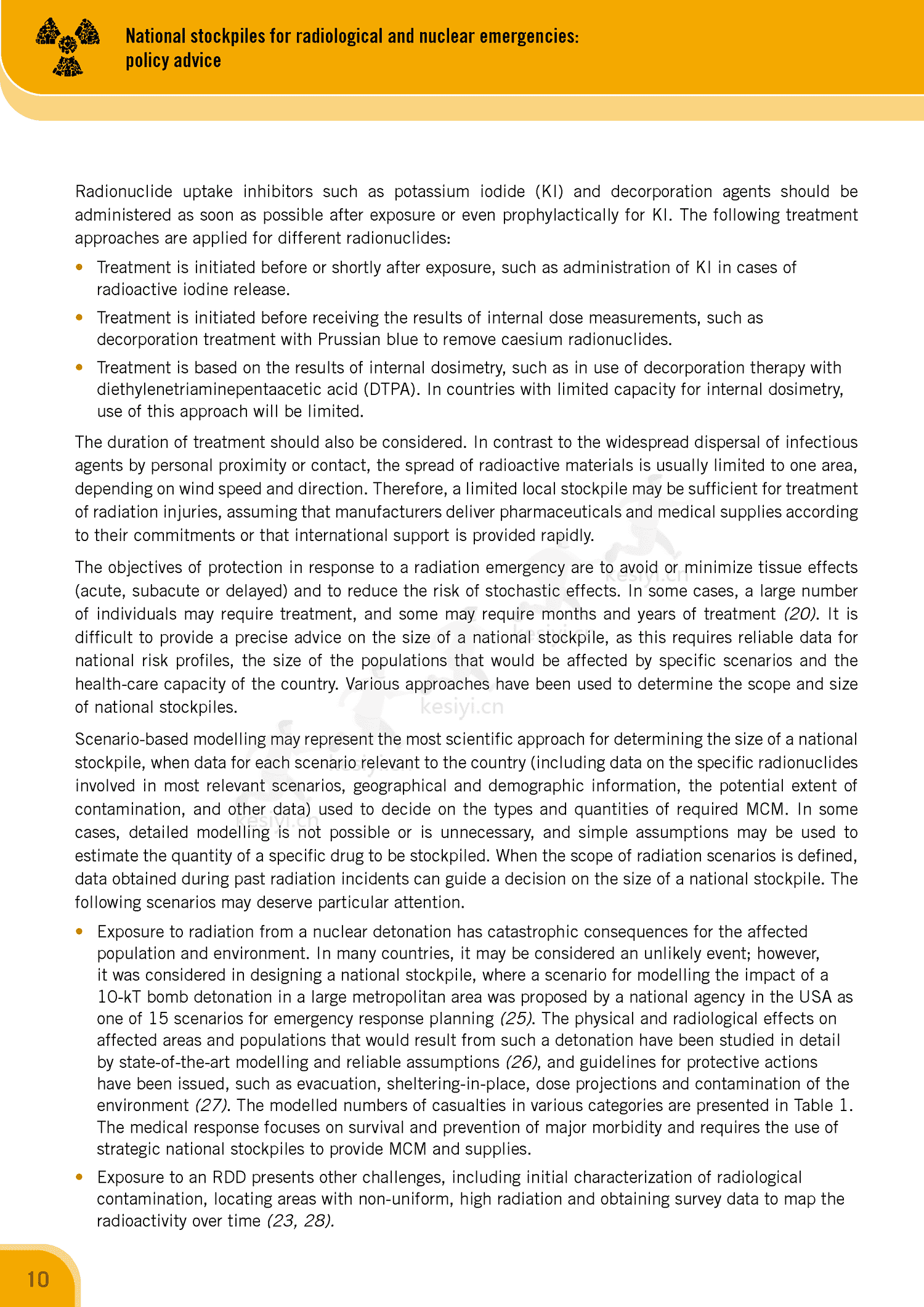 25 / 66
25 / 66
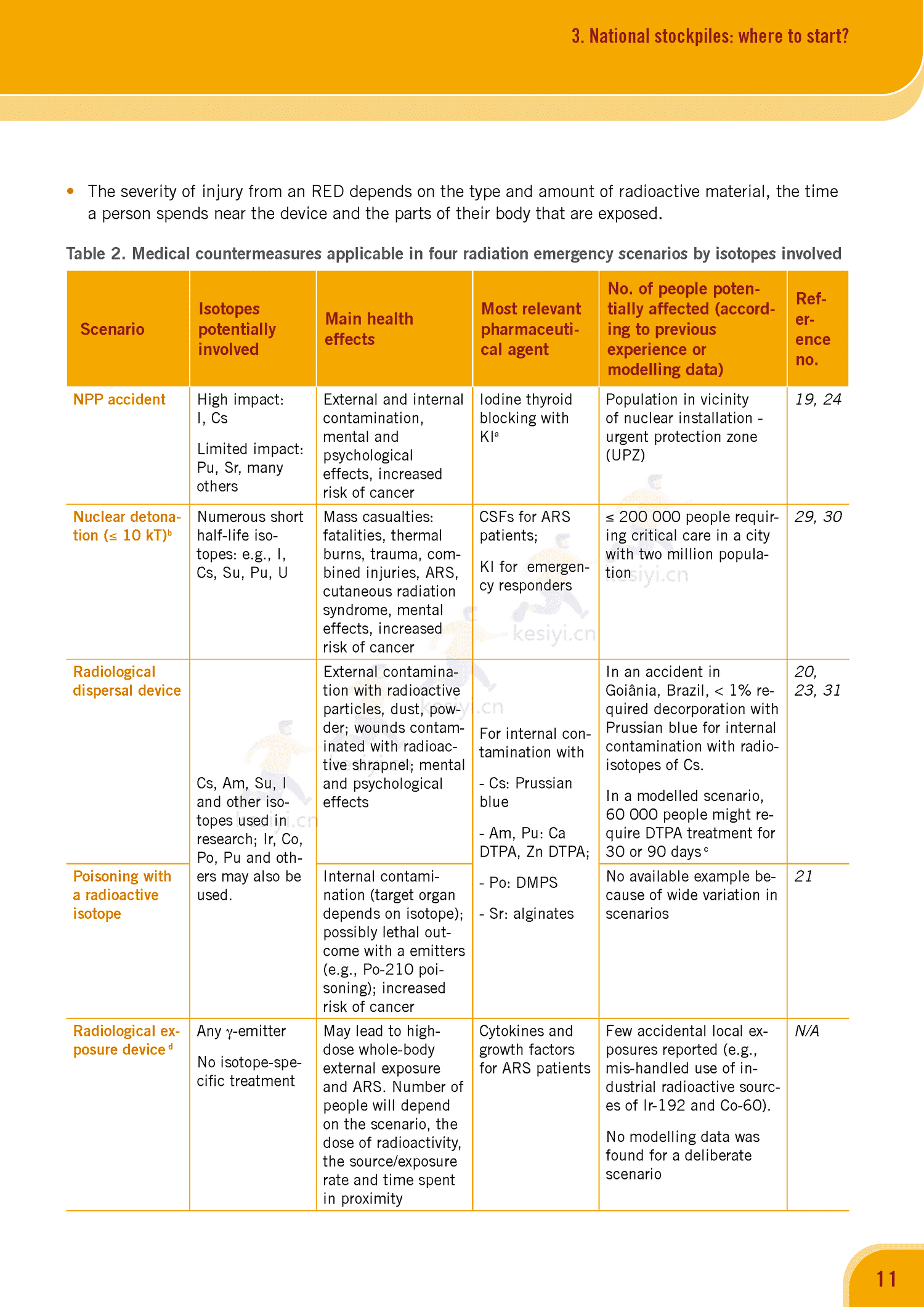 26 / 66
26 / 66
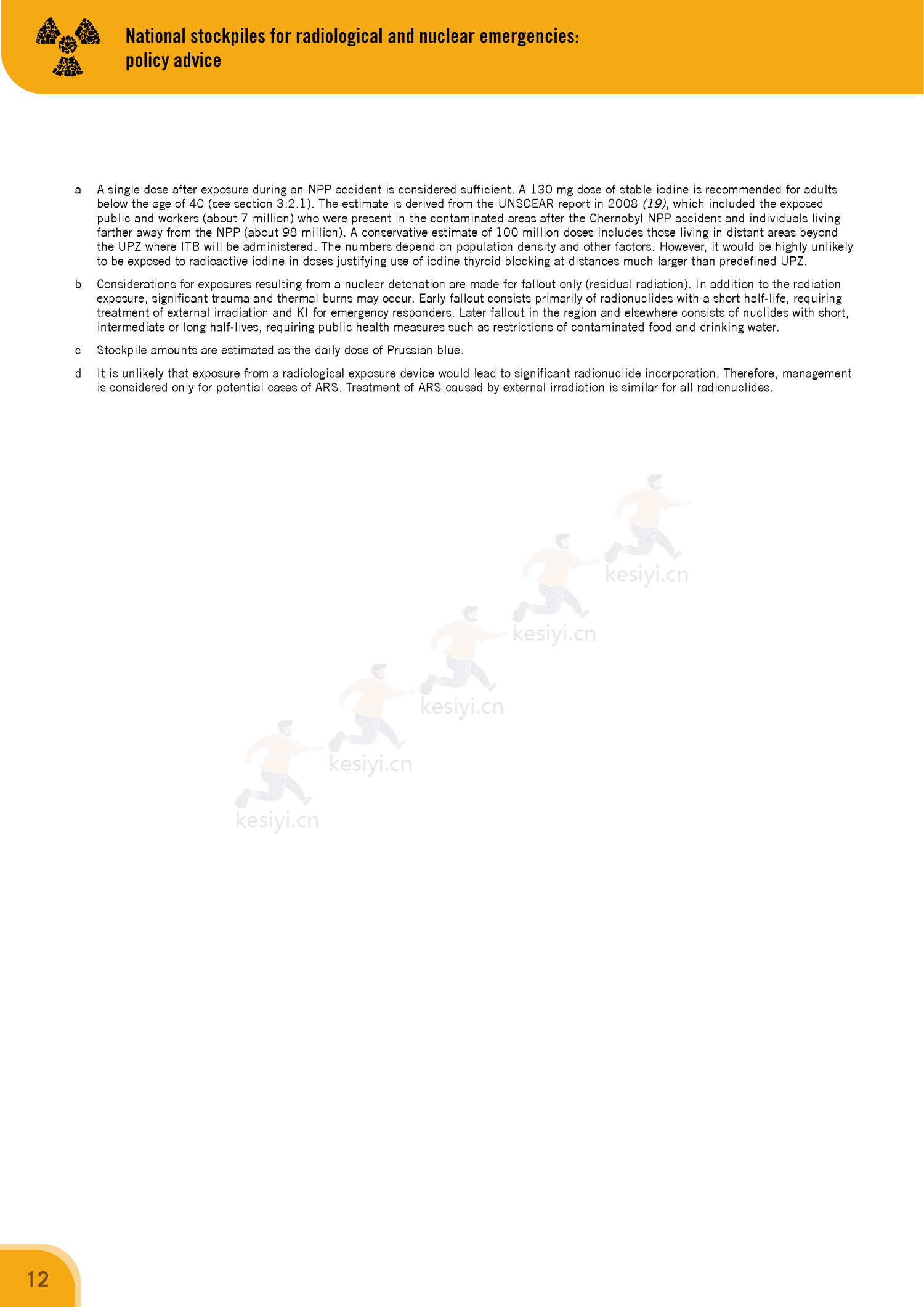 27 / 66
27 / 66
 28 / 66
28 / 66
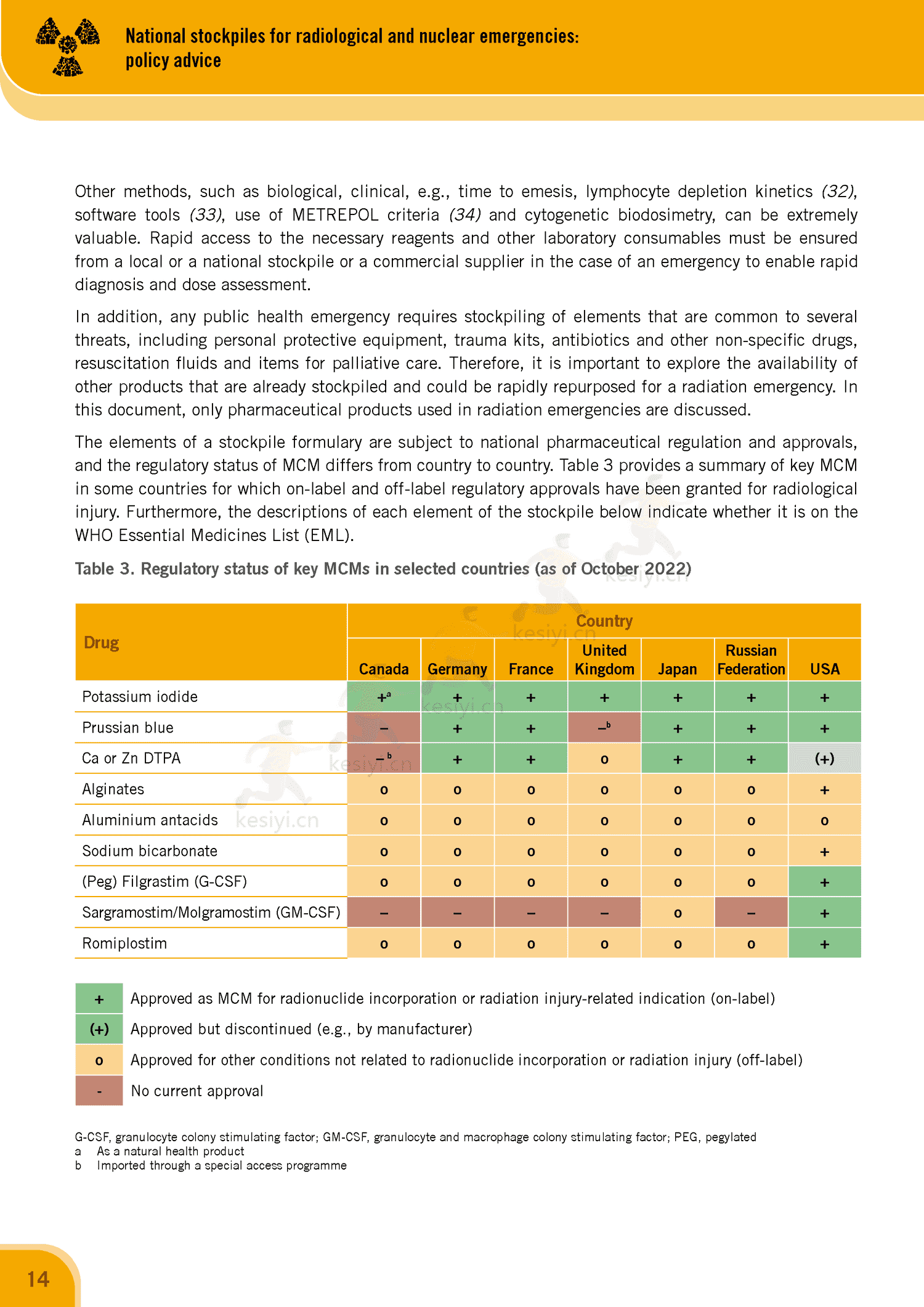 29 / 66
29 / 66
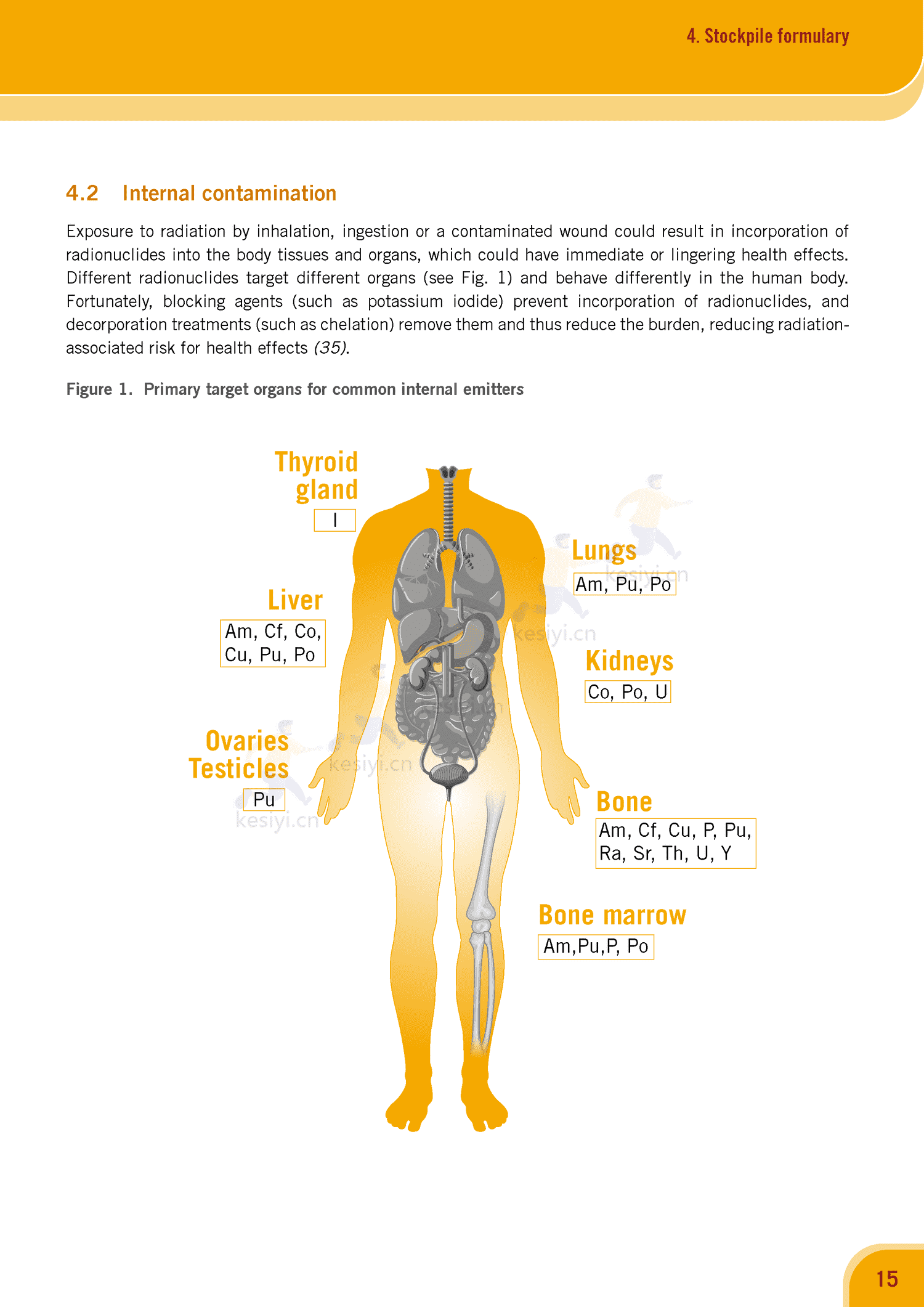 30 / 66
30 / 66
本文档共66页,请下载完整版阅读。
免责声明:本平台只做内容的收集及分享,内容版权归原撰写发布机构(或个人)所有,由小编通过公开合法渠道获得,如涉及侵权,请联系我们删除;如对报告内容存疑,请与撰写、发布机构联系。






